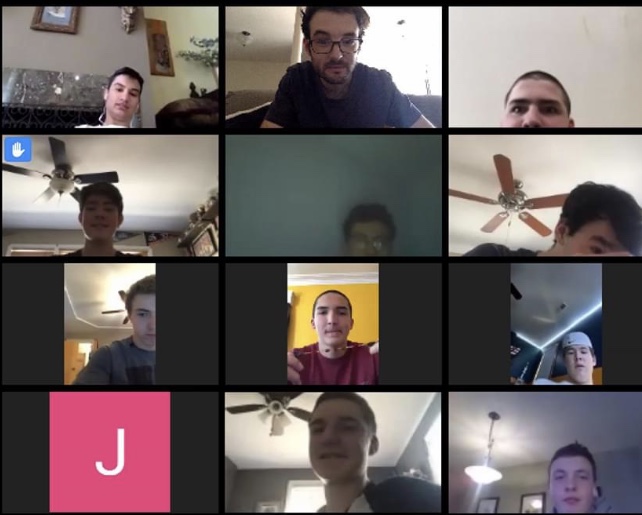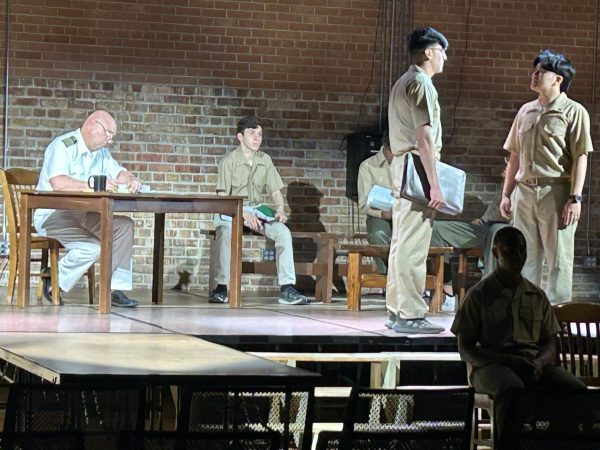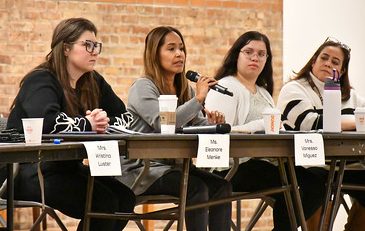Ever since March 20, the school community has been on a schedule of e-learning, doing school work and quizzes outside of the regular classroom.
The two months thus far have been rather taxing to both students and teachers. Now to make matters worse, the pandemic has caused Governor J. B. Pritzker to extend the “ Stay at Home Order” until May 30.
English teacher, freshmen soccer coach and varsity assistant coach Manuel Medina feels e-learning is a big change to what he and the students are used to.
“It is a big adjustment. I think the students and teachers are really missing the human connection that education requires. It is a struggle to balance work and home life, but everyone is feeling the impacts of these changes—both students and teachers.”
“I think if teachers continue to support their students, this process will be hard, but possible. I myself miss seeing all the faculty and students every day. It is a pleasure I took for granted.”
Theology teacher and Assistant Swimming Coach Dominic Scheuring feels e-learning has presented him and his students with many challenges.
”As a teacher, this has forced me to try to distill the content of each of my courses to its fundamental and constitutive parts. You have to cut a lot of things you would normally do. Your options become limited, but it can be a good thing because I’m forced to figure out the most efficient means of getting across the essential insights on a given topic or question.
One of those challenges is to address students’ limited attention span, especially without he built-in breaks that occur in a regular day at school.
“I try not to make any videos over 10 minutes if I can avoid it, but the simple act of walking to each new class is a huge benefit that disappears with e-learning. The work to be done can seem overwhelming, even if the time spent per day on school work is less. Also verifying authentic work versus copied work can be a bit more difficult.”
Scheuring also observes that without face to face interaction, education loses an important dimension.
“One of the more difficult parts for me is (not) reading the faces and body language in the room for attention and understanding. We are forced to reduce the conversational nature of education. No matter how many tools we use to bridge the distance, in my short experience of this, there always seems to be a bit of an alienating and isolating element to e-learning.”
No matter the challenges Scheuring has faced he still believes he and students alike are doing what they can during these difficult times, and even believes e-learning also has had some benefits.
“I’ve forced myself to find some new technological tools to teach, such as Screencastify and EdPuzzle which are proving useful. When we can’t track progress easily in person, we need to find digital ways to do that. These new situations push us to ask new questions and find new solutions — so for that, I’m thankful.”
Like these teachers, students like juniors like Juan Avila and Artem Massey are experiencing an extended period of e-learning for the first time, and finding both challenges and opportunities.
Avila feels this new style of leaning has caused some anxiety for many.
“many students going through this right now are having the same thoughts and problems. (We’re) trying to keep our grades up and worrying about how next year will be affected, and wondering if we will be able to play sports in the fall.”
Massey believes that e-learning has produced a challenge of engagement, however he feels that this new way of learning is okay for now.
”The possibility to learn is there, but it is much harder to commit to it. School is a safe and fun learning environment where you’re surrounded by your friends. E-learning is learning in isolation and with minimum human contact. I personally don’t feel like e-learning is good, but it’s better than nothing at all.”
Clearly, there are frustrations for everyone as they try to stay engaged during this time of e-learning. However, both students and teachers are optimistic that with good communication and support, this new strategy can work.






